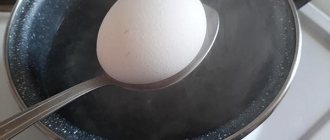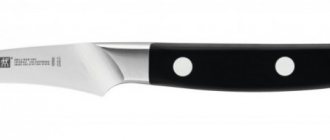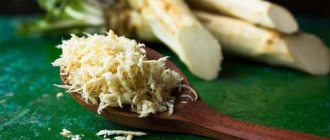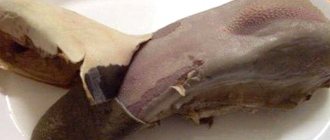New potatoes are no less an exquisite delicacy than any lobsters, if you choose a tasty variety and get creative with the preparation. Grown on domestic lands, natural and nutritious, it becomes the highlight of any summer dish. It is enough to fry it, stew it or even boil it - the aroma and taste will excite any visitor to the kitchen.
The desire to taste the fashionable potatoes is always countered by the reluctance to peel them. The traditional method using a knife takes a lot of time, and it also leaves stains on your hands. The dark skin of the fingers after cleaning is difficult to lighten even with prolonged washing with soap. I propose to consider several simple ways to quickly peel young potatoes.
Sort the vegetable in advance to remove with a knife the areas affected by the wireworm. Remove green tubers altogether - they contain a lot of melanin, which is poison. Cleaning these potatoes will not reduce their toxicity.
How they peel potatoes in the army and in production
Under production conditions, potatoes are peeled in several ways:
- Thermal - by treating the tubers with steam under high pressure.
- Chemical - applying caustic soda to root crops, which corrodes the peel.
- Mechanical - removing the skin by placing the potatoes in a machine with special knives and rough walls.
The stereotype associated with the fact that in the army soldiers peel potatoes has long been outdated. Now special personnel from civilians are recruited to work in the kitchen, who are engaged in the delivery, preparation and preparation of food for military personnel.
Popular potato varieties
Botanical science knows at least two thousand varieties of this vegetable. Some of them are ideal for stewing, crumbly varieties are well suited for boiling “in their jackets”, varieties with a low starch content are suitable for frying.
In any case, all these different varieties need to be peeled, including new potatoes. Do not neglect them, preferring other side dishes, be it cereals or pasta.
Peeling potatoes means removing the skin of the fruit. The thickness of the top layer removed may vary, depending on experience and skills. You can peel potatoes using a knife or other utensils. Industrial cleaning in catering establishments, army canteens and other similar places is carried out using special units.
How to determine the suitability of potatoes
How to cook potatoes in the microwave quickly, easily and very tasty?
Having used one of the listed methods for storing peeled potatoes, before using them you need to check whether the tubers have deteriorated in order to understand whether they can be used for cooking.
To do this, evaluate the appearance of the potato and judge its suitability for food based on the following characteristics:
- if the potatoes were stored in a container with cold water, and it was filled with air bubbles, this signals the beginning of fermentation, and such fruits should not be eaten;
- If, when storing tubers in water, they were not completely immersed in it, then a dark coating may appear on the part of the fruit protruding from the water. Blackened areas can be cut off with a knife and after washing the vegetable in water, use it for cooking;
- if the water in which the tubers were stored becomes cloudy, this only indicates the release of starch. Such potatoes can be safely used for cooking, but they become harder and boil less well;
- the appearance of an unpleasant odor or a slippery coating on the surface of the fruits indicates that they have deteriorated. The plaque can be cut off with a knife and after washing the fruits, you can use them for food, but their taste will become worse;
- If the tubers become soft, it means they have gone bad. These potatoes should be thrown away.
Find out also how to properly and what is the best way to store potatoes on the balcony.
The most delicious dishes come from potatoes that have been peeled immediately before cooking. But if for some reason you need to prepare tubers in advance, you can do this using the above tips and recommendations. In this case, the main condition is to correctly observe the product storage conditions and terms.
Special gloves for peeling vegetables
Special gloves were invented in Denmark. This quick way to peel young potatoes is reminiscent of a grater, but it is located directly on the gloves, which makes peeling the vegetable more convenient.
To use the method you must:
- Wear gloves.
- Turn on the water.
- Rub the root vegetable with gloves under running water.
You don’t have to wash the potatoes first, but pick out the “eyes” with a regular knife. The special abrasive material of the gloves tells you how to quickly peel young small potatoes without getting your hands dirty.
How to store peeled potatoes
Money tree: how to form a crown correctly and easily
Storing peeled potatoes is difficult. The root crop becomes covered with black spots in a short time. There are several methods recommended for long-term storage.
- A common method is to store the root vegetable in cold water. However, do not forget that storing it in this form will lead to the dissolution of vitamins and nutrients in the composition. To slow down this process, store potatoes as whole tubers.
- It is worth noting that the shelf life of potatoes without loss of nutrients is no more than 3–4 hours. Premature blackening of fruits occurs due to the active use of nitrogen during cultivation. To slow down the process, add a slice of lemon to the pan along with the potatoes.
- For longer storage, it is recommended to use the cold water soaking method in the refrigerator. After peeling the potatoes, place them in cold water. Soaking in ice water slows down the blackening process of the product.
- Before you start cooking, rinse the root vegetable again with water. However, this technique is not suitable when it comes to preparing boiled potatoes, since long-term storage in water reduces the density of the vegetable crop.
- To maintain the density of the tubers, you need to place the peeled potatoes in a bag and put them in the freezer. The bag must be tied to prevent air from entering. Otherwise, the method will not have the expected success. There is no need to defrost potatoes before cooking; you can immediately plunge the root vegetable into salted, boiling water.
- To preserve sliced potatoes for a long time, you will need cling film. First, wash the peeled tubers, removing any starch that is released. Dry the washed root vegetable with a towel, then proceed to cutting the potatoes. After this, wrap the chopped root vegetable in cling film and place it in the freezer. Cut potatoes can only be stored in the freezer.
There is no need to defrost the vegetable before cooking. If you want to cook fried potatoes, place the slices in a heated frying pan, after greasing them with sunflower oil. If the cut potatoes are intended to be boiled, then place them in boiling salted water.
“Important: all information on the site is provided for informational purposes only. Before applying any recommendations, consult with a specialized specialist. Neither the editors nor the authors are responsible for any possible harm caused by the materials.”
Using the housekeeper
Using miniature vegetable peelers (housekeepers) you can greatly simplify the process of peeling potatoes. The peel is cut off in thin layers of approximately the same thickness.
In this case, the tubers should be washed in advance so as not to introduce dirt onto the already cleaned parts.
This is the most common way. The peel from the tuber is cut off in a circular motion or towards you. This method is more suitable for experienced people. The likelihood of cutting yourself when cleaning with a knife is very significant.
Purchasing an electric vegetable peeler will help you get rid of one problem and immediately create another.
We'll have to decide which is more unpleasant: peeling potatoes
manually or wash a dirty potato peeler every time.
Conditions
Temperature
5 ways to fix over-salted food
The most suitable temperature for storing potatoes (at any time of the year) is 2-3 degrees Celsius. At this temperature, it is at rest, that is, roots do not grow and nothing freezes.
If the temperature is higher, the tubers will begin to “wake up” and prepare for spring planting.
The process of “awakening” potato tubers:
- The eyes are awakening.
- Sprouts are growing.
And in the peel (in the upper layer) solanine (a toxic substance) begins to accumulate. If the temperature is close to 0 degrees, this will significantly affect the taste of the potatoes. It will have a sweetish aftertaste that can spoil the taste of any dish.
This happens because starch turns into sugar at low temperatures, and slightly frozen potatoes begin to deteriorate very quickly.
Air humidity
Requirements for air humidity when storing potatoes:
- The optimal humidity should be ensured at the level of 80 - 85%; with such parameters, the tubers will not “dry out”, that is, they will not lose their weight during storage.
- In dry air, the taste of potatoes deteriorates, the tubers become dry and lethargic, and their juiciness disappears.
- If, on the contrary, the humidity in the vegetable storage is too high, then fungal diseases and rotting of root crops may occur.
Other
Conditions for storing potatoes:
- Ventilation must be provided.
- It is not allowed to cement the bottom of the vegetable storehouse or cover it with floorboards, linoleum and other similar materials, because moisture will easily accumulate and mold will gradually appear. It is best to fill the bottom with sand, or small crushed stone or pebbles (materials that absorb moisture well).
- Two weeks before storing tubers in a vegetable storehouse, it must be disinfected. After any treatment, the storage must be closed for two days and then thoroughly ventilated.
- Potatoes should not be exposed to direct sunlight; because of this, they will begin to accumulate toxic glycosides (turn green), and it will no longer be possible to eat them.
- No “neighbors” are desirable for this root crop; the only exception can be made for beets (it is better to place them on top of the potatoes) - this is a favorable “neighbor.” Beets perfectly absorb excess moisture, and they do not harm this root crop.
- If you have to remove rotten potatoes, then you need to remove not only one tuber, but also those that were lying nearby (with close contact, all nearby tubers are infected with infection, even if they look healthy outwardly).
- It is necessary to prevent various pests from entering the storage facility from the outside: rats, mice and slugs.
Difficulties in storing potatoes arise due to starch and water, which are contained in large quantities in the tubers.
Not everyone has a vegetable storage facility, so many will be interested in other ways to store potatoes: on the balcony, in a box.
Use of vegetable peelers
Using a vegetable peeler is much easier and safer than using a regular knife.
The most popular vegetable peelers:
- with a horizontal blade (Y-shaped, Fig. 3);
- with a blade located on the side (Fig. 4);
- straight (Fig. 5).
Rice. 3. Vegetable peelers with a horizontal blade Fig. 4. Peeler with vertical blade Fig. 5. Direct peeler
The most economical way to remove peels is with a floating blade, which follows the contour of the tuber during operation. When choosing a device, you need to pay attention not only to the blade, but also to the handle: it should be made of non-slip material.
A straight vegetable peeler is especially convenient; it can be used to cut the peel in both directions: towards you and away from you (a strict tuber, like a pencil), and with the tip you can easily cut out the eyes. It is safer than other vegetable peelers: the blade is protected on both sides, so even children can use it.
Potato storage methods
In order to preserve the peeled fruits and use them for the next cooking, you should prevent the appearance of black plaque on the surface of the tubers. At the same time, it is necessary that the product does not lose the beneficial substances it contains and retains its good taste. Next, we will look at methods for storing peeled potatoes at home.
At room temperature
The most popular way to store peeled potatoes at home at room temperature is to soak them in clean cold water. But this method is effective only if you need to preserve the tubers for a short period of time.
In order to prevent contact of the fetus with oxygen and slow down oxidation, perform the following actions:
- Rinse the peeled fruits in running water.
- Place the tubers in a separate capacious container (saucepan or deep bowl).
- Pour clean cold water over the vegetable so that it completely covers the tubers. You can add a raw onion or a slice of lemon.
- Cover the container with a lid, leaving a small gap for air access.
After just 48 hours of storing peeled tubers in water at room temperature, a slippery coating appears on them, indicating spoilage of the product.
In a refrigerator
If you need to save peeled potatoes until tomorrow, you can use the refrigerator. The air temperature inside should be no more than +6°C.
Did you know? The world's most expensive potato variety
- Place the peeled tubers in a container with cold water and then put it in the refrigerator - this method is the simplest, and the fruits can later be used to prepare any dishes.
- Blanching tubers - whole vegetables are immersed in a pan of boiling water for a few seconds, and then put in a bag and placed in the refrigerator. Hot water destroys the enzymes found in the top layer of the fruit, making them unable to react with oxygen. Blanched potatoes last longer than fresh ones, but have a specific taste and can only be used for boiling in their entirety.
- Storing peeled potatoes in a tightly tied bag, from which the air has been previously released. With this method, the fruits can be used to prepare any dishes.
- Grate the tubers and add finely chopped onion or garlic to the mixture. A container with such a semi-finished product can be kept in the refrigerator under cling film and used for preparing grated potato dishes.
In the freezer
The most reliable method for keeping peeled tubers fresh and tasty for a long time is freezing the fruit. It is best to freeze potatoes whole. But if you need to use chopped tubers for preparing dishes, then they are cut in advance into pieces of the required size and only then sent to the freezer.
In order to freeze whole peeled potatoes, you need to follow these steps:
- Rinse the fruits and dry them a little with a napkin.
- Place the tubers in a plastic bag, dividing them into portions.
- Release excess air from the bag and seal it tightly.
- Place packaged portions in the freezer.
In this way, you can store potatoes that you plan to use whole for cooking in the future—the frozen fruits just need to be immersed in boiling water and boiled until tender.
Important! If tubers are stored in the freezer for a long time, they can completely lose their taste. Freezing potatoes cut into pieces is carried out in this way:
- Rinse the tubers under running water, blot their surface with a napkin to remove excess moisture.
- Cut the fruits into pieces of the required size.
- Divide the chopped vegetables into individual portions and wrap each of them in several layers of cling film.
- Place the tubers in the freezer.
When using this storage method, you need to take into account that in the freezer the starch in potatoes turns into sugar, so the defrosted vegetable will have a sweetish taste.
Cleaning a Boiled Vegetable
This method is suitable if you need to boil young potatoes to prepare a dish. It helps you complete your task in 5 seconds. To do this, you need to have a plate of ice water.
Step-by-step instruction:
1. Boil potatoes until tender.
2. Remove the vegetable and immediately place it in a plate of ice water.
3. Leave for 5 seconds, quickly remove the peel.
Due to temperature changes, the peel itself begins to peel off. This facilitates quick cleaning of the root crop.
In order to quickly peel boiled potatoes, you can use a method that is similar to the method for quickly peeling eggs. Its basic principle is the same.
Necessary:
- Remove the cooked potatoes from the pan.
- Pour cold water over it for 10 seconds. For a better effect, you can add ice.
- Make a cut in a circle along the root vegetable with a knife.
- Using pressure on both sides, remove the skin from the potatoes.
You don't have to make a cut on the potato; you can start peeling it with your fingers right away.
With a knife and fork:
- Remove the cooked potatoes from the pan.
- Prick it with a fork.
- Press the root vegetable onto the board and use a knife to peel the skin.
It is very convenient to peel hot potatoes this way. The hot vegetable does not come into contact with your hands, and therefore does not burn them.
Cleaning in 1 second:
- Before cooking, make a cut in a circle using a knife.
- Boil the vegetable.
- Immediately after boiling, immerse the potatoes in cold water for a few seconds.
- Peel it with your fingers.
New potatoes are a nutritious and delicious seasonal dish. There are many ways to quickly peel young potatoes and boiled ones in their skins without a knife. At the same time, they are quite fast and help save a lot of time. Now you know how to quickly peel young potatoes, you can try it.
It would seem that what new can be said about how to peel potatoes? For most Russians, this not the most fun procedure for the rest of their lives is associated with the concept of debt. For men - military duty with many centners of potatoes, peeled as they come. For women - marital duty with daily standard dinners with the obligatory presence in the menu of this main vegetable in the country, “second bread” and “third meat”.
Let's try to systematize all the main methods of how to properly peel potatoes
.
How to quickly peel raw potatoes?
To quickly peel potatoes, you need to use one of the simple methods. All of them do not require any special equipment and allow you to quickly cope with unpleasant work.
Clean with a vegetable knife
The easiest way to peel potatoes is if you do it with a small knife. It must be well sharpened and have a comfortable handle that will not slip in your hand.
Correct sequence of actions:
- Thoroughly washed tubers are placed on napkins and quickly get rid of excess moisture. This simple operation will help remove all dirt from the vegetables and prevent them from slipping while peeling.
- The knife is directed away from you and is used to cut off the inedible layer. This is best done in a spiral.
- After this, the tubers are washed with cold water.
- At the very end, various defects (eyes, blackened areas, damage) are removed.
Using a vegetable peeler
Peeling potatoes with this tool turns from a boring task into an interesting and safe activity. You can buy a vegetable peeler at any store that sells kitchen utensils and household goods. Its cost varies depending on the quality of the material and the manufacturer.
- The potatoes, previously washed from dirt, are placed on a tray or wooden board.
- After 15 minutes, moisture will evaporate from its surface, which will interfere with work.
- The device is taken in one hand and the potatoes in the other.
- After this, they begin to carefully peel off a thin layer of peel along the entire vegetable.
- The peeled potatoes are washed again and cut into the required pieces.
A quick way to clean with a drill
To peel potatoes with a drill, you must thoroughly wipe the tool you are using. The best option would be to use a newly purchased device that has not been used for its intended purpose.
To carry out the work, you must perform the following steps:
- Purchased or collected tubers are placed in a bucket.
- They are filled with cold water and left for 5 minutes.
- During this time, prepare the drill by attaching a clean brush or any similar product to its rotating element.
- The device is connected to a power source, and the installed nozzle is lowered into a bucket.
- Using a working drill, perform circular movements, trying to get to each tuber.
- After this, the water is drained, removing the separated skin.
How to peel potatoes in a few seconds?
You can peel raw potatoes with a knife in a few tens of seconds. To speed up this procedure several times, you need to use a special method. It is as follows:
Potatoes, cleaned of dirt and plant debris, are kept at room temperature for 20 minutes. After this, take a knife and run it around the entire circumference of the tuber.
It is important that the cut is not too deep and also ends at the same point where it began. In this form, the root vegetable is placed in hot water. After a few minutes, it is removed from the boiling water and placed in the ice-cold liquid. After all these manipulations, take the potato with both hands and perform a stretching movement. If everything is done correctly, the peel will come off without much effort.
Original cleaning methods
Some call them lazy, and others call them inventive people. But there are individuals in the world who do not want to peel young potatoes with their own hands, much less longer than the commercial break on TV. How to peel tubers without a knife, salt, gloves and a pan?
- Drill. Attach a new toilet brush to the appliance. By lowering this non-standard attachment into a bucket of new potatoes and water, clean the contents within 1 minute after turning on the device.
- Semi-automatic washing machine, for example, “Fairy”. It’s even simpler: “load” the tank with potatoes and water, then turn on the washing mode. In a few minutes the product will be free from the peel. Just rinse the tubers first, since grains of earth can get into inaccessible compartments of the washing machine, increasing its functionality by 1 option - an unpleasant squeak during operation.
How to preserve at home
If you cook potatoes at home, you can use other, more accessible methods.
Cold water
It is recommended to place peeled root vegetables in cool water. Store potatoes in this way for no more than 4 hours. With a prolonged stay in water, the purified product loses the main amount of useful elements.
Food bags
After peeling the potatoes, they should be placed in a plastic bag, from which it is recommended to remove as much air as possible. The prepared bundle can be placed in the refrigerator. In this way it will be possible to preserve root vegetables for 1 day.
Freezing
If long-term storage of the vegetable is required, it can be frozen. The product is placed in the freezer whole or cut into pieces.
Entirely
To freeze whole potatoes, place the tubers in a bag. It is recommended to tie it. Place the prepared bundle in the freezer. However, first you should make sure that the bag is well tied. It should not allow oxygen to pass through. Prepared potatoes can be boiled without defrosting. To do this, it is recommended to immerse it in boiling water, salting it.
Pieces
To preserve cut potatoes for a long time, you should use cling film. To do this, it is recommended to do the following:
- thoroughly wash the peeled tubers to remove starch;
- dry the potatoes with a towel;
- cut the vegetable into cubes or slices;
- wrap in film;
- put in the freezer.
The prepared vegetable does not need to be defrosted. To cook fried potatoes, just place the slices on a heated frying pan and pre-grease it with oil. If you plan to boil potatoes, you should put them in boiling salted water.
Boiling water
In this case, it is recommended to pour boiling water over the prepared semi-finished product. Thanks to this, the top layer of potatoes can be protected from darkening. This effect can be achieved through high temperature treatment. The prepared product can be kept in the refrigerator for a maximum of 1 day.
The easiest way to peel potatoes
To use it you will need:
- potato;
- large saucepan;
- large enamel bowl;
- ice cubes;
- water;
- skimmer.
Fill a saucepan with water and bring it to a boil. Wash the potatoes thoroughly with a brush and place them in boiling water. Boil until done. This will take no more than half an hour depending on the variety and size of the tubers.
During this time, you need to prepare an ice bath. To do this, fill a large bowl with ice cubes and then add some cold water. Leave a few centimeters between the edge of the container and the water level so that it does not overflow when you immerse the boiled tubers.
Once the potatoes are cooked, remove them from the boiling water using a slotted spoon and immediately transfer them to ice. Leave the tubers in the water for 2-3 minutes. After this, you can remove the potatoes from the ice water. Now you can clean it easily. Run your thumbs over it and the peel will come off easily. It's really very simple.
Steps
Method 1 of 2:
Using a potato peeler
1
Hold the potatoes in one hand and the potato peeler in the other. Stand near the sink or over the trash can before you begin peeling the potatoes. This way you won't end up with potato skins flying all over your kitchen. There are two main "models" of potato peelers; Here's how to hold each one: If you have a standard oblong potato peeler, hold it like a paint roller so that your thumb balances it between your fingers but is still away from the blade. If you have a Y-shaped potato peeler, hold it like a pencil. This route is more effective and you are less likely to hurt yourself. It should lie between the middle and thumb (of the working hand), and your index finger should hold it in this position.
2
Starting at the base of the potato, slowly peel the skin away from you. Imagine drawing stripes by moving the knife away from you and keeping your elbow close to your body. Start at the base and try to make one quick motion along the entire length of the potato. Ideally, you should end up with strips of peeled peel. This applies to both types of potato peelers, even the y-shaped ones. While it's possible that grandma held it differently and painted it differently, you'll get results in peeling a lot of potatoes this way. Potatoes are a little harder to peel than other vegetables; the skin will peel off in chunks, especially if the potatoes are not smooth and round.
Pay special attention to peeling the last bits of peel; they need more processing (and slower cutting so you don't hurt yourself).
3
Turn the potatoes and continue the peeling process. Once you finish one side of the potato, turn it in your hand, master the rhythm - peel and turn, peel and turn
Don't worry about cleaning the top and base, just yet.
4
Trim away dark spots. You may notice that when the inside of the potato is opened, dark spots are visible. This is quite normal - there are few perfect potatoes. Focus on this area and continue cutting until there are no dark spots left.
5
Continue the process with the top and bottom of the potatoes. This part is cleaned as if you were shaving your knee - by aiming the potato peeler as best you can around the curve and working your way back to the small spots, you will inevitably end up finishing this process.
Method 2 of 2:
Removing the Skin of Boiled Potatoes
- 1
Place the potatoes in a large pot of water.
The pan should be large enough so that the potatoes are completely covered with water without being crowded. The water level should be at least 2.5 - 5 cm above the potatoes.
- 2
If desired, make slits in the potatoes.
You may notice that potato skins are easier to peel (or at least easier to grip) if there is a groove. Simply make a line in the skin (about only 0.6 cm deep) around the center of the potato, like an equator.
- 3
Keep it in boiling water for about 15 minutes.
In a good sized saucepan, 6 or 7 potatoes should cook for about 15 minutes. You will need more or less time depending on the amount of potatoes. When you think the potatoes are done, pierce one potato with a fork—if it pierces the skin and then slides right in, it's done.
- 4
Once the potatoes are cooked, plunge them one at a time into ice water for 5-10 seconds.
Keep a bowl of ice water on hand for when the potatoes are done. Take each potato with tongs (do not touch the potato immediately) and place it in a bowl of ice water.
- In order to cool down, they should not remain there for too long - 5-10 seconds is enough.
For each potato you may need to add an ice cube or two to the water, the heat from the potato will also transfer.
- 5
Peel the peel.
Magic: just press the peel with your fingers and it will immediately fall off like a tablecloth. If you have cut a potato, place your thumbs on this line and pull towards the end of the potato, the potato skin will remain in your fingers.
Adviсe
- Use the pointed tip of a knife to remove the potato eyes. Simply stick the tip into the potato and twist with a flick of your wrist.
- Save the peel and add it to soup or roast it. Potato skins are full
vitamins and minerals and should not be wasted.
- Potato peelers are sharp. Be careful when holding the potato because the knife can often “jump” when you get into a difficult situation while peeling.
- Do not throw cleaning materials into the garbage disposal. This can be a real cause of damage to your garbage disposal and will cost you more in the end.
Peeling potatoes with a knife
The speed of peeling potatoes largely depends on the quality of the knife. The most convenient knife for this purpose is a small one with a short blade (Fig. 1). Thrifty housewives try to cut off the peel as thinly as possible.
Fig.1. Regular potato peeler
As a rule, tubers are peeled in a spiral, starting from the middle: first one half, then the other (Fig. 2). Then, use the tip of a knife to remove the eyes and damage.
Rice. 2. Peeling potatoes with a regular knife
Terms and storage time
When peeled tubers come into contact with air, they quickly become covered with a dark coating. This occurs as a result of contact of iron, magnesium and potassium contained in the fruits with oxygen. A chemical oxidation reaction begins, the vegetable quickly turns black and spoils.
To extend the shelf life of peeled vegetables for consumption, various methods are used.
Let's consider how long peeled fruits can be stored at different temperatures:
- at room temperature, the tubers can be kept in cold water for 3–4 hours, after which they lose most of the nutrients, and the taste of the fruit deteriorates;
- blanched or fresh tubers packed in a bag can be stored in the refrigerator until the next day;
- peeled fruits, soaked in water and refrigerated, can be stored for about 24 hours;
- in the freezer at temperatures down to –18°C, the fruits can remain fresh for several days;
- In a freezer at a temperature of at least –30 °C, peeled vegetables can last for several days or even weeks.
Important! When deep freezing, it is recommended to place the washed, peeled potatoes on a flat surface without wrapping them in a bag or film.
Preliminary preparation
Before peeling potatoes, they must be washed in running water or in a bowl. Some housewives prefer to peel dirty tubers and wash them after removing the peel. But you need to remember that in the soil stuck to the potato skins there are many particles of semi-decomposed organic matter, which is used to fertilize the beds.
When cleaning, dirt mixes with the juice, is absorbed into the pulp and is difficult to wash off. True, after this the tubers are subjected to heat treatment, due to which the likelihood of contracting dysentery is negligible, but the danger should not be discounted. Washing potatoes before peeling is much more hygienic.
If a teenager peels potatoes or an adult housewife has an uncomfortable knife, the blade can slip off the wet peel and injure your hand. Therefore, it is better to dry the tubers with a paper towel after washing.
Peeled potatoes are immediately immersed in cold water, otherwise they will darken. Slicing begins only when all the tubers are cleaned.
Peeling jacket potatoes
It is easy to clean. But for a long time. In addition, there is a risk of burning your hands. Here are the fastest options.
The fastest way
For the entire operation we take:
- Potatoes;
- Water;
- saucepan;
- Knife.
We wash the root vegetables thoroughly, make a cut in a circle on each one so that it ends in the same place where it began. The cut should be so thin that only the skin is cut through. Place the root vegetables in water. Place on high heat. Bring to a boil. Reduce heat and cover with a lid. Cook for a third of an hour, but it can be faster or longer: it all depends on the size and type of potatoes.
As soon as it is ready, drain and fill with ice water for half a minute. We lay the tuber horizontally. Now we start cleaning. With a slight movement, pull the root peel from the cut line and grasp it near the line with all your fingers. We remove the peel easily and naturally. We also remove the peel from the other side of the root vegetable. Let's take the next one.
Clean with a fork
Boil the potatoes, prick the root vegetable with a fork, and remove. Place on a cutting board. We don’t take out the fork, we start scraping the vegetable with a spoon or knife right on the board.
Method similar to the first
But a little different. So, take a bowl, fill it with cold water and put ice in cubes. After removing the potatoes from the boiling water, place them in a bowl with ice and water. We take it out after half a minute, cut the skin crosswise with a thin sharp knife. Starting from the cut, remove the peel. You can clean other products in the same way:
- Beetroot;
- Turnip;
- Fruits;
Peeling boiled potatoes
Potatoes, boiled with their skins, differ in their taste and are used to prepare many dishes.
There are two ways to clean such tubers.
Method 1:
This is one of the most common peeling methods, in which you need to remove the potato from the water, place it on a board or plate, prick it with a fork and remove the skin with a knife.
This is a good way to peel very hot tubers while saving as much edible pulp as possible.
Method 2:
The following method will help you get rid of the skins on tubers in almost a couple of seconds:
Wash the potatoes well, then make circular cuts, running the knife along the so-called equator
It is very important that the starting and ending points of the cuts coincide. After this, send the tubers to the stove to cook
Before finishing the cooking process, prepare a pan with very cold water. You can even throw some ice in it for a better effect. Now, using a slotted spoon, transfer the potatoes to a pan with ice and count to about ten.
Next, remove the tuber from the water and press it with both hands from different ends.
Thanks to this method, the peel peels off quite easily and quickly.
At the same time, the potatoes themselves will remain quite hot. This way, you can peel the potatoes in a minimum amount of time without burning your hands.
Important:
You need to learn how to peel young potatoes correctly.
If you approach this process ineptly, then your hands, and maybe even other parts of your body, will have the color of iodine. When cleaning young tubers, it is recommended to wear rubber gloves.
Following these simple rules, time-tested in practice
, any housewife can easily, safely and quickly peel any number of useful tubers. In order to get the result you want, simply choose the option that is suitable for you. And the variety of different recipes will allow you to add spice and also please your loved ones.
Storage rules
There are several rules for preserving raw peeled potatoes:
- After each cleaning, immediately rinse each tuber and place it in a saucepan filled with clean, cool water.
- Do not cut the tubers into small pieces. The less you cut them, the more nutrients they lose.
- To keep the potatoes longer, add a slice of lemon or citric acid on the tip of a knife to the water where they lie.
- But it's best to peel potatoes before cooking. The longer it sits in water, the more starch will leave it. This will make the potatoes harder, “more oaky”, and will not boil over.
- You can determine that the potatoes in the water have disappeared by the gas bubbles formed on the surface of the water. The tubers become slippery and soft to the touch. This occurs during 2-3 days of storage in warm conditions.
The ability to properly store raw, peeled potatoes is beneficial to everyone. Using the tips described above, a wise housewife will always be prepared for the unexpected arrival of guests.
We suggest you read What can be made from agave
What are the benefits of new potatoes?
Young potatoes are rich in starch, which makes it possible to obtain from them a sufficient amount of carbohydrates, which are a source of energy for the body. It also has a positive effect on digestion and lowers cholesterol levels.
500 grams of vegetables contain the daily requirement of ascorbic acid and potassium. It contains protein, fats, zinc, iron and vitamins A, PP, U, K, D, E and carotene. It also contains a large amount of vitamin C, but 5th part is lost when cleaning and improperly frying or cooking the product. Therefore, new potatoes are especially useful when cooked with their skins on.
Young potatoes can not only saturate the body with nutrients, but also heal. There are a large number of traditional methods for treating colds using this product. Doctors recommend consuming potatoes with skin if you have kidney problems.
Although it is considered a high-calorie product, it is not at all. In 100 gr. peeled boiled potatoes contain 75 kcal, and boiled potatoes in their skins - 66 kcal. The baked root vegetable with the peel contains 136 kcal, and the peeled baked one contains 77 kcal.
How to peel young potatoes with a knife
The most ancient and proven method of peeling potatoes is using a knife or other sharp oblong object that looks like a knife. However, it is immediately worth noting that this is also the longest method of all those described below.
The features of the knife cleaning process are as follows:
- choose a small tool so that it is comfortable to hold in your hand and maneuver over the surface of the potato;
- Rinse the potatoes well before peeling;
- carefully scrape each potato (!), and do not remove layers of skin from it with a knife;
- pick out your eyes;
- After peeling, do not forget to rinse the potatoes again, and now they can be cooked.
This is how most experienced housewives simply peel potatoes; by the way, they can do it much faster than novice cooks, because this process is not only labor-intensive, but also requires special attention and inspiration. Imagine that this is the work of your whole life for these 15-30 minutes, and then it will be much easier to overcome it!
Manufacturers and most popular models
How to properly fry delicious potatoes
The choice of a professional potato peeler must be approached based on the volume/performance/price/dimensions ratio.
Cars from leading domestic manufacturers, foreign (Italy), as well as CIS countries (Belarus) are popular among catering establishments.
The quality, functionality, interesting design at an affordable price attract the attention of buyers from the Italian Fimar devices. The machine body is made of stainless steel, a transparent lid for easy control coupled with easy unloading of purified products - in general, everything is thought out
The structure of the abrasive is similar to sandpaper, which makes the cleaning process more gentle. Plant productivity: from 60 to 500 kg/hour. Working chamber volume: from 5 to 18 kg.
Among domestic analogues, it is worth paying attention to the K-200 potato peeling machines manufactured by Torgmash LLC (Perm) and MOK_300A TYPHOON by Atesy (Moscow). The Perm device is practically not inferior to imported machines either in design or functionality
Made in a floor-standing version. It operates on a 380 V network and is capable of peeling up to 200 kg of potatoes or carrots per hour with a simultaneous load of 8-10 kg. Plus, it is the first domestic model to use environmentally friendly Cubitron ceramics in its abrasive. The Moscow-made installation differs in the location of the abrasive discs. They are installed inside the working cylinder, due to which cleaning takes place without significant loss of the edible part of the product. The peel is not cut off, but actually sanded. The design of the machine is durable, because it is made of stainless steel and the seams are welded. With a one-time loading, the productivity exceeds 300 kg/hour.
Belarusian batch potato peelers MOK-150M and MOK-300M produced by Republican Unitary Enterprise "Torgmash" can successfully handle beets and carrots in addition to potatoes. These devices have proven themselves, first of all, for their reliability.
The Italian Sirman and the Swedish concern Electrolux have good models. Scandinavian machines also offer a large selection of accessories for cleaning onions, seafood and even drying herbs.
How to properly store peeled potatoes
To ensure that peeled potatoes retain their beneficial properties and do not disappear, follow certain conditions. First, you need to thoroughly clean and rinse it, and then use one of the options listed below.
Until next day
To save peeled potatoes until the morning, wash them thoroughly and place them in a saucepan. Fill with cold water and place in the refrigerator. When stored in a warm room, mucus will appear on the potatoes, signaling spoilage. The next day, check the vegetable for the presence of mucus, since even the refrigerator will not give a 100% guarantee.
For a day
To store potatoes for a day, you will have to use the freezer. Peel the vegetable, rinse it in water and put it in a plastic bag. It is recommended to pack whole potatoes, but if they are later used for soup or frying, then you can pre-shred them.
There is no need to defrost the vegetable, so after storage it must be cooked immediately. Please note that when defrosting abruptly, the vegetable will crack and crumble.
For a few days
To store for 48 hours or more, you need to seal the potatoes in a plastic bag, vacuum seal them, and place them in a deep freezer. This method will preserve the beneficial properties of potatoes as much as possible.
How to Preserve Peeled New Potatoes
Remove a thin layer of peel, rinse the vegetable with running water and, if necessary, chop in advance. Place on a towel to drain excess moisture and wrap tightly with cling film. Store in the freezer.
Features of working with potatoes
Even today, despite the advent of vegetable peelers, many cooks continue to peel potatoes with a knife. In this case, the work is carried out towards oneself, in a spiral or circle. Even many years of experience and a very sharp knife are not able to protect against injury using this approach. And the processing speed of components leaves much to be desired. There is only one way to speed up and simplify the approach:
- We take a tuber and cut off the peel on both sides to give it stability.
- Place the vegetable on the board and begin to remove the peel with longitudinal movements. At first, the flesh will be cut a little more than usual, but over time the skill will come.
Tip: Even when buying potatoes, you need to pay attention to their quality. If the tubers are covered with dots and dimples, cleaning in any case will turn into torture that will last for a long time. And wormholes are often found inside such a product.
By the way, this is also the best way to work when using a vegetable peeler. In this case, fingers and nails will be protected from scratches and cuts, and the pulp from the vegetable will be removed to a minimum extent. This method can even be used when teaching children.











